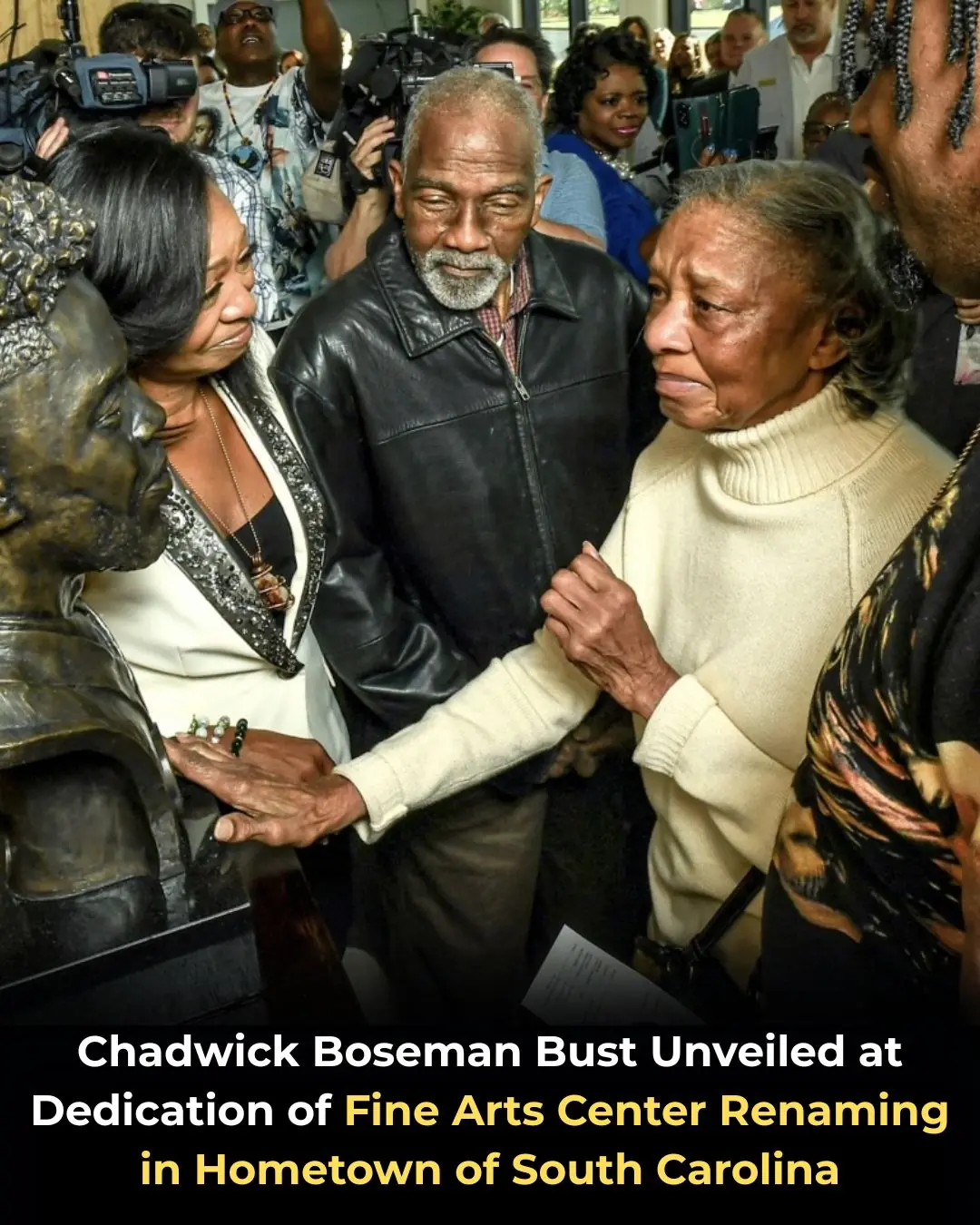
Meet Adrian Octavius Walker, the Photographer Whose Impact Extends From Ferguson to the Smithsonian
He feels called to document the truth and fullness of Black life — and he treats that calling like a sacred responsibility.
“I want to always tell the truth with the people. Real people.”
For photographer Adrian Octavius Walker, this is not just an artistic philosophy — it is a duty. Each frame is an act of preservation, each portrait a vessel of memory. To Walker, photography is far more than aesthetics; it is a way of ensuring that Black stories are told with accuracy, tenderness, depth, and dignity. As he often says, the best photographs don’t simply show what happened — they reveal why it mattered.

Walker is both a storyteller and a cultural archivist, someone who stands at the intersection of past and future. His imagery explores the subtle emotional layers of Black life: joy and sorrow, resistance and rest, softness and strength. Through his lens, everyday moments become historical touchstones, and monumental moments become deeply human.
Documenting Ferguson: A moment that transformed him
A decade ago, Walker unknowingly stepped into history during the Ferguson uprising after the killing of Michael Brown. With nothing but his iPhone and a pull toward truth, he photographed what he saw — rage, grief, resilience, community.
“I didn’t know what the heck I was photographing at first,” he recalls. “I just knew I had to be out there.”
His raw documentation became a powerful reflection of a city in mourning and motion. As noted by The New York Times and NPR, the Ferguson protests marked one of the most significant civil rights moments of the 21st century, and Walker’s early images captured the unfiltered pulse of that moment. Those photographs later became part of a published book, received recognition abroad in Paris, and eventually positioned him among a generation of artists preserving modern Black history.
Photography rooted in integrity and humanity
For Walker, the camera is a tool for truth — not spectacle, not sensationalism. He rejects the pursuit of virality or the pressure to glamorize struggle. His work is grounded in authenticity and guided by the lived realities of the people he photographs.
“It’s not about the glam and the glitter—it’s about getting in the trenches and telling a real story,” he says.
Whether he is documenting a protest or capturing a quiet, intimate portrait, Walker’s approach is consistent: honesty first.
His widely acclaimed image Black Virgin Mary, which honors Black spirituality and sacred imagery, was later acquired by the Smithsonian, an acknowledgment of its cultural importance. As Smithsonian Magazine has highlighted in similar works, images that reclaim Black identity within traditionally Eurocentric iconography carry deep historical weight — and Walker’s interpretation stands among them.
Legacy, family, and the long arc of history
Walker is deeply aware that his work is not just for this moment — it is for the future. His photographs are artifacts, evidence, and love letters to generations he may never meet.
“I think about my kids,” he says. “A century from now, they’ll be able to say, ‘My dad photographed the uprising in Ferguson and went to Paris. His work is in the Smithsonian. He met Steven Spielberg. Amy Sherald bought his art.’ The flexes keep flexing.”
But the accolades are secondary. As Time and The Washington Post have often noted about artists who document social moments, the real power lies in impact — in shaping how history is remembered. For Walker, every shutter click contributes to a larger narrative about Black life, Black struggle, and Black joy.
A vision built with community and love
Creation, for Walker, is not an isolated act. It thrives in community, collaboration, and shared dreams. His ultimate goal is to build a creative space where the people he loves can express themselves freely:
-
his daughter exploring her passion for cooking
-
his best friend curating vintage collections
-
artists and storytellers sharing space, ideas, and intention
This dream echoes what NPR has called “the new wave of Black creative collectives,” spaces where art becomes communal, healing, and generational.
When introduced to the Because of You: Legacy in Focus LEGO set, Walker immediately saw it as more than a toy — it was a chance to build a memory with his daughter.
“This is something I can put together with my daughter,” he says. “It’s not just gonna sit—it’s a project, a memory, a piece of history we can build together.”
Preserving Black stories — with truth, tenderness, and intention
Walker’s work is proof that preservation requires action. It demands care, participation, and connection. A century from now, people won’t just see photographs — they’ll see a legacy shaped by truth, guided by purpose, and rooted in community.
Through every portrait, every moment, and every story he captures, Adrian Octavius Walker ensures that Black life is not only remembered but honored — fully, beautifully, and permanently.
News in the same category


Which Raw Food Would You Eat

Barber’s Haircuts for Homeless Initiative Brings Participant to Tears

Oprah Winfrey Selects Tina Knowles’ Memoir ‘Matriarch’ for Book Club in a Tearful, Powerful Moment

Common Remembers The Time He Told Chance The Rapper To ‘Keep Following His Dreams’

Vanessa Bryant Pays Tribute to Late Daughter Gigi After UConn NCAA Championship Win

Meet Dreena Whitfield-Brown, the Powerhouse NJ Publicist Named One of Inc. Magazine’s Top Female Founders of 2025

Chadwick Boseman Bust Unveiled at Dedication of Fine Arts Center Renaming in Hometown of South Carolina

This Dad Will Do Anything for His Girls, Including Making Sure He Wins Musical Chairs at a Daddy-Daughter Dance

Study Finds Parents Show More Affection to Daughters Than Sons Worldwide

US Researchers Develop Ultra-Light Metal Foam That Stops Armor-Piercing Bullets

Mauro Morandi: Living 33 Years in Complete Solitude on a Remote Italian Island

Twenty-Year-Old Nokia 3310 Still Holds 70% Battery, Highlighting the Longevity of Early Mobile Phones

Magnetic Rice-Sized Robot Could Revolutionize Non-Invasive Kidney Stone Treatment

4 Unusual Morning Pains You Should Never Ignore — They May Signal a Hidden Tumor

Warning: The 2 Foods That Trigger Cancer Risk the Most

Reverse Premature Gray Hair with a Simple DIY Blackening Remedy Using Starfruit & Potatoes

Goodbye Cavities? A Future Where Teeth Heal Themselves May Be Closer Than We Think
News Post

Why Do We Get Shocked by Static Electricity

What Clearing the Table Says About You

The Magic of Lemon Juice and Activated Charcoal: Natural DIY Solutions for Skin and Teeth

Improve Eyesight Naturally With Onion Tea: Benefits, Uses & How to Make It

Make your own biotin powder for glowing skin

Roll your feet daily—unlock rapid healing throughout your body!

Diabetes? Just boil these leaves to lower blood sugar (without medications)!

How to Get Rid of Bad Breath (Halitosis): Scientifically Proven Home Remedies

What is their purpose in doing so?

Breakthrough Hair-Loss Treatment

Which Raw Food Would You Eat

Barber’s Haircuts for Homeless Initiative Brings Participant to Tears

Oprah Winfrey Selects Tina Knowles’ Memoir ‘Matriarch’ for Book Club in a Tearful, Powerful Moment

Common Remembers The Time He Told Chance The Rapper To ‘Keep Following His Dreams’

Potato Toner for Clear Skin, Dark Spots, and Pigmentation: A Comprehensive Guide to Restoring Your Natural Glow

Add This Oil to Vaseline To Get Rid Of Wrinkles

DIY Okra-Based Keratin Treatment for Silky, Strong Hair: Transform Your Hair Naturally At Home

Homemade Aloevera Gel – How to Make Aloe Vera Gel at Home
